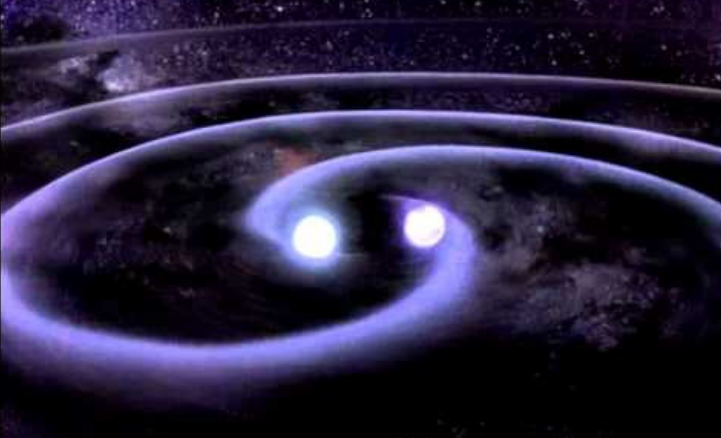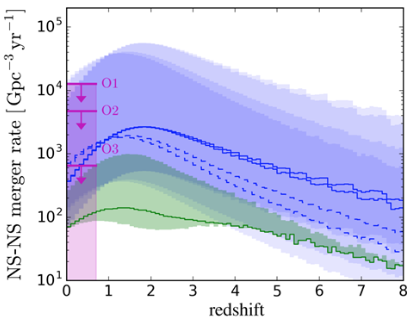Data
Advanced LIGO and the Origin of the r-Process

Nuclear reactions in stars and in their final supernova explosions are responsible for the creation of light elements from beryllium to iron in the Universe. On the other hand, the astrophysical sites responsible for the production of heavier elements, such as silver and gold, are still poorly understood. It is currently under discussion whether neutron star mergers (NSMs) or core-collapse supernovae (CC SNe) have been the main source of elements forged by the rapid neutron capture process (r-process). In theory, galactic chemical evolution (GCE) simulations can test these two scenarios by comparing their respective predictions with observations, e.g. with europium abundances in observed galaxies. The GCE simulations reveal that both scenarios, the CC SNe and the NSMs scenario, are able to produce the chemical evolution trends of europium, as well as a combination of both, so that further constraints are required in order to identify the main astrophysical site of the r-process.
In a recent study [1], we compiled the average occurrence of NSMs needed for chemical evolution models to reproduce the europium abundance pattern measured in the Milky Way. We then convolved this number with the cosmic star formation history and compared the resulting NSM rate with the upper limits established by Advanced LIGO (Fig. 2). Within the current uncertainties (blue shaded area), the rates predicted by GCE (using NSMs only as the source of the r-process elements) are consistent with the LIGO upper limits. However, more work is needed to reduce the uncertainties and upcoming gravitational wave detections will certainly improve our ability to constrain the origin of the r-process.
Researchers: B. Côté (MSU & UVic), K. Belczynski (Warsaw U.), C. Fryer (LANL), C. Ritter (UVic), A. Paul (UVic), B. Wehmeyer (U. Basel), and B. O'Shea (MSU)
Further Reading:
[1] B. Côté et al. 2017, ApJ, 836, 230
[2] B. P. Abbott et al. 2016, ApJL, 832, L21

